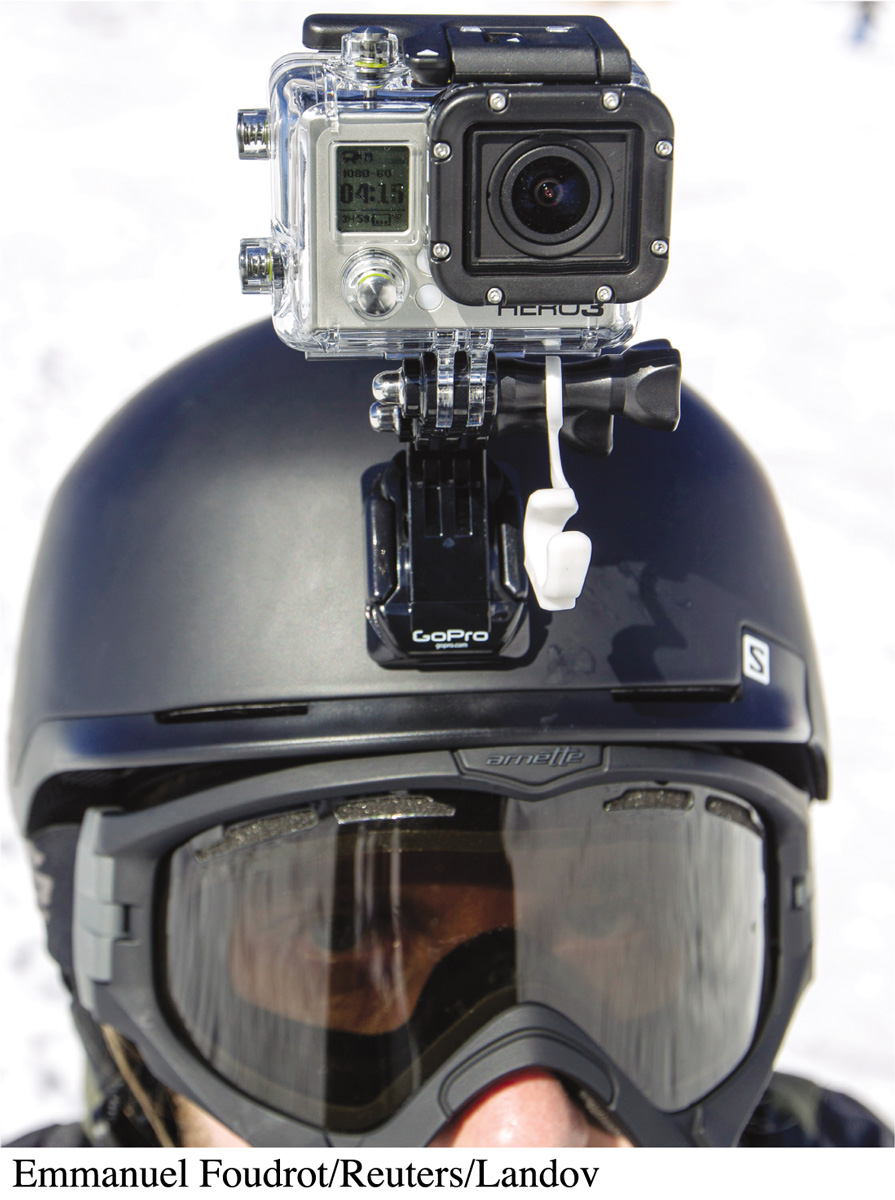Chapter Introduction
11
Advertising and Commercial Culture

363
The Early History of American Advertising: 1850s to 1950s
The Evolution of U.S. Advertising: 1950s to Today
Persuasive Techniques in Contemporary Advertising
Commercial Speech and Regulating Advertising
Advertising in a Democratic Society
A recent success story of viral online marketing is a product that gets a lot of attention despite rarely appearing on-screen. The product isn’t staying behind the camera; the product is the camera. Nick Woodman founded GoPro in 2002 after being disappointed in the quality of pictures and videos he and other amateur photographers could capture of activities they enjoyed, like surfing. He set out to develop a good-quality camera that was affordable to amateur photographers, but also durable and versatile enough to capture professional-looking pictures and video. Easily attached to a helmet, a bike, or a skateboard, GoPro videos shared on YouTube started getting millions of views and have become recognizable by their clear fish-eye lens point of view. When the company went public in 2014, it was valued at over $3 billion. The brand has become so successful that the name GoPro is often used to describe any brand of body-mounted camera, similar to the way Kleenex or Band-Aid (both brand names) are often used to refer to any tissues or self-adhesive bandages.1
GoPro has a distinct advantage in the age of social media because it’s a product that can produce stunning and easily shareable videos, like an eagle-POV shot as the bird soars over an alpine valley (over nine million views) or a firefighter rescuing a kitten (over twenty-five million views). Successful marketing through the Internet and mobile and social media is a rapidly growing part of the advertising industry, as is the risk of making splashy public mistakes (see also “Converging Media Case Study: Marketing, Social Media, and Epic Fails” on pages 388–389). GoPro videos can be entertaining pieces of media on their own, but they’re all arguably pieces of advertising or marketing for the brand.
364
Building ads into TV shows and movies has long been a standard practice, so the convergence of advertising into the digital realm is not surprising. But as advertising has proliferated and become a standard part of our daily lives, it has come to look very different than it did in its infancy. In the digital age, advertising is everywhere, from billboards to T-shirt logos to the beginnings of three-minute YouTube videos.
Regardless of its changing forms, advertising has long played a prominent role in contemporary life. For consumers, ads shape our purchasing decisions. For companies, savvy advertising can drive sales, putting a firm far ahead of its competitors. Advertising has also given rise to whole new industries and lucrative business models—from the Madison Avenue ad agencies that produce slick campaigns for high-end clients to the most basic classified ads created by individuals on craigslist to the search engine industry now led by Google and fueled by online ads. With social media playing such a prominent part in our everyday lives, more companies are hoping to imitate successes like GoPro, finding ways to benefit not only from traditional ad content it creates but also from materials created by the consumers themselves.
ADVERTISING COMES IN MANY FORMS—from classifieds to business-to-business ads to those providing detailed information on specific consumer products. However, in this chapter, we concentrate on the more conspicuous consumer advertisements that shape product images and brand-name identities. So much of consumer advertising intrudes into daily life, causing many people to routinely complain about it. And people are increasingly finding ways to avoid ads—for example, by using digital DVRs to zip through them or by blocking pop-ups with Web browsers. However, because advertising shows up in most media—the Internet, TV, radio, books, newspapers, magazines, movies—it serves as a kind of economic glue holding these industries together. Without consumer advertisements, most media businesses would cease to function in their present forms.
365
In this chapter, we take a close look at advertising’s evolving role in our lives by:

macmillanhighered.com/mediaessentials3e
Use LearningCurve to review concepts from this chapter.
examining the early history of American advertising, including the rise of ad agencies, brand-name recognition, advertising’s power to create new markets and build a consumer culture, and regulation to control that power
tracing the evolution of U.S. advertising, including the shift to emphasizing visual design in ads, specialization and restructuring of advertising agencies, and the impact of the Internet on this medium
assessing persuasive techniques in contemporary advertising, such as using testimonials, playing on people’s fears, and placing products on movie sets or on TV shows
considering the nature of “commercial speech” and regulation of such speech—for example, to combat deception in advertising
exploring advertising’s impact on our democracy